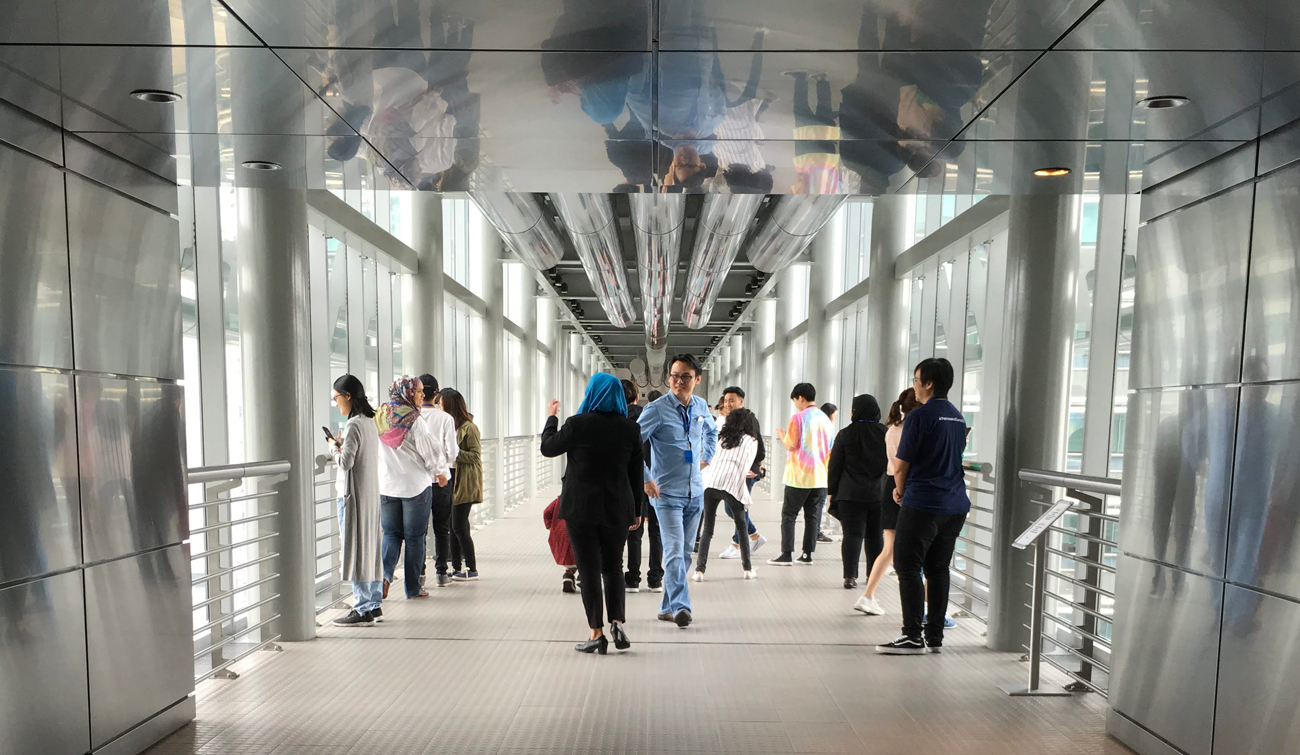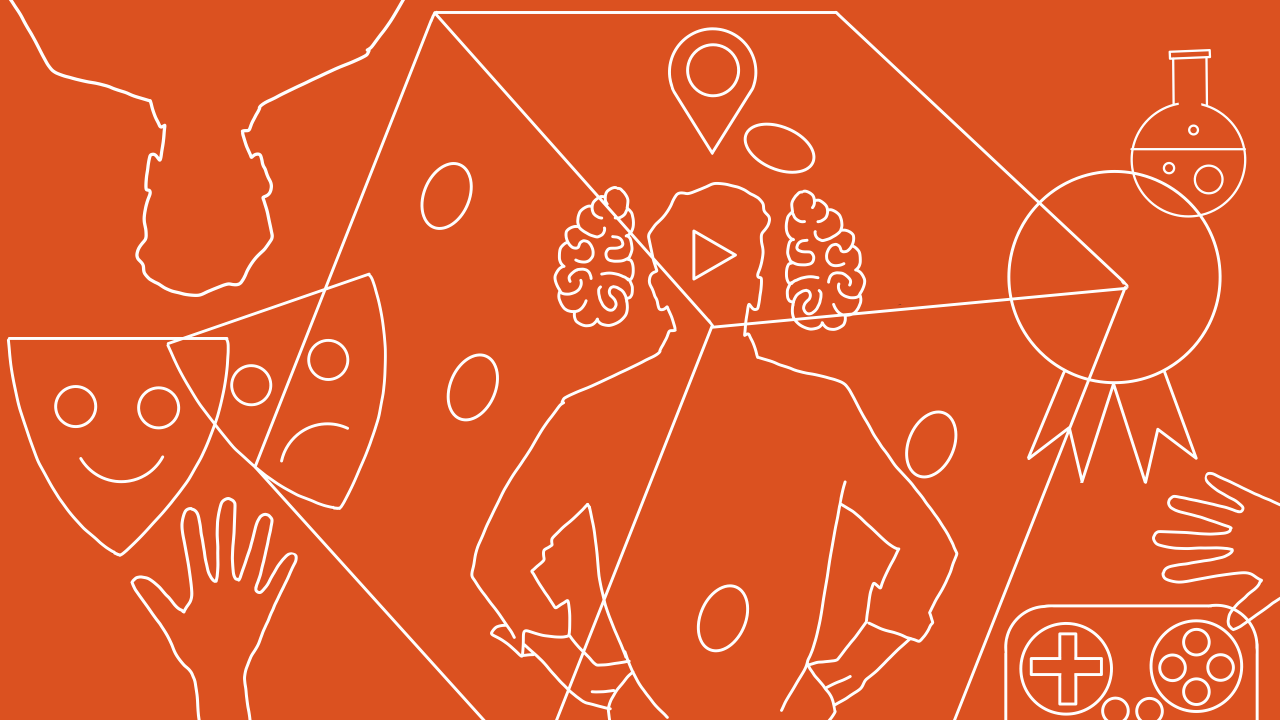In recent times, the need for the newer generation to encapsulate their learnt processes into a form of interactivity has resulted in the gamification of many processes. We are now able to gamify shopping, gym lessons, history classes such as those seen in the free roaming Assassin’s Creed Odyssey Discovery Tour environment, and many more! We have not seen much of the same in the realm of science and recently an opportunity to challenge that frontier came along.
An Immersive Design Challenge, initiated by Dr Pouline Koh, Head of the Design School at Taylor’s University and Ms. Foo Huey Chyun, Head of Learning Innovation at Petrosains set about to do exactly that. The project stemmed from a need to address the needs of the youth in the current generation in the play like environment of Petrosains. Featuring a combined set of skills of students from both the Interior and Creative Media backgrounds, the students set about imagining a gamified process for the KLCC Observation Deck as well as the Petrosains Oil Rig. Starting off with identifying pain points along the site for the youth demography, the students set about trying to engage with the site through the perspective of both a local and a tourist. An emphasis of the Design Challenge was also to enhance the experience of the visitors, reduce the need for facilitators and also for the displayed information to be interactively self-sufficient. It was also imperative that a sense of informal learning is achieved through gamified immersion.
In a study by LEGO on learning through play, it was found that when children were immersed in the act of self-directed effort, are minds-on and persist despite distraction, benefits to learning can be seen. A scenario of a child playing with a set of building bricks is given. She is imagining how the pieces will fit together and does not hear her father’s call for dinner. This mental immersion and resistance to distraction is a typical trademark of learning through play in which the children learns best when actively solving a problem as opposed to being explicitly instructed (Zosh, Brinster, & Halberda, 2013; Matté-Gagne, Bernier, & Lalonde, 2015) As such, the design ideas that were proposed were centered on the idea of gamifying the user experience so as to provide for a platform of informal learning backed by research and data. Students were also introduced to the Stanford Design Thinking model which is condensed into the attributes of empathy, definition, ideation, prototyping and testing seen through the lens of needs, desirability and viability.

The Design Process
At the beginning of the project, students from both programmes were brought to Petrosains for a site visit. This was done to allow the students to have first-hand experience of the project. Earlier in the visit, the Head of Learning Innovation from Petrosains organized a simple but impactful Design Thinking workshop. According to Rikke Friis Dam and Yu Siang Teo from Interaction Design Foundation, Design Thinking is a repetitive process to understand the user, challenge conventional assumptions, and redefine problems. The workshop was meant to give students a better understanding of the design process. It was a significant exposure to the students as it prepared the students with prior knowledge and the right skills to execute the project.
They were then divided into small groups combining both Interior Architecture and Creative Media students. Each group were assigned to a different exhibition area such as the KLCC Observation Deck, KLCC Sky Bridge and Petrosains Oil Rig exhibition area. During the site visit, the students identified several pain points and that was translated into a user journey map.

A user journey map is a visualization of an individual’s relationships with a product/brand over time and across different channels. According to Nielson and Norman, without it, an agreement on how to improve customer experience would never take place.

This is the first phase of design thinking which is to empathize with the end user. Later on, the students translated the findings into a visual user journey map and presented to their facilitator. In this phase, they have defined the problem based on their own assumptions and discussions.
Different types of UX Design research methods such as user persona, usability testing and other methods were introduced in class and were implemented in their design decision making processes. Several ideas were put forth in the brain storming session however most of the ideas could not be materialized because of certain safety restrictions in Petrosains and KLCC Tower.
Students progress were monitored not only from face-to-face settings but also through online consultation using Google Classroom and several Google Apps. This was done to ensure the smoothness of the project progression between learners and facilitators.
According to Center for Teaching Innovation from Cornell University, research shows that educational experiences that are active, social, contextual, engaging, and student-owned lead to deeper learning. In the next phase of the project we began to see a significant improvement on the level of work that was produced by the students when they started to execute their ideas into a clarified prototype. We were amazed by the ideas that was presented during the consultation session in class.

Several presentations and proposals were presented to the facilitators and representatives from Petrosains which was conducted to refine and enhance the prototype. Quite a number of ideas had to be re-evaluated and refined in order to make the prototype feasible.
Upon the completion of the refining period of the design process, the proposals were put forth as a finalized presentation to the Petrosains team. At this stage, the design ideas were backed up with a strong research foundation as well as an understanding of the construction feasibility. Virtual walkthroughs, movies, 360-degree camera viewpoints and prototype apps were amongst the varied nature of proposals presented by the teams.
“Teamwork is the ability to work together toward a common vision. The ability to direct individual accomplishments toward organizational objectives. It is the fuel that allows common people to attain uncommon results.” – Andrew Carnegie

Each design proposal was accompanied by several precedent studies to emphasize on its buildability as well as an estimate of the cost pricing comparatively to other similar precedents. A progressive prototype app was built by one of the teams to demonstrate its workability in a real-life context. The Petrosains team were impressed by the workability of the prototype and decided to award it as the winning team of the Design Challenge.

